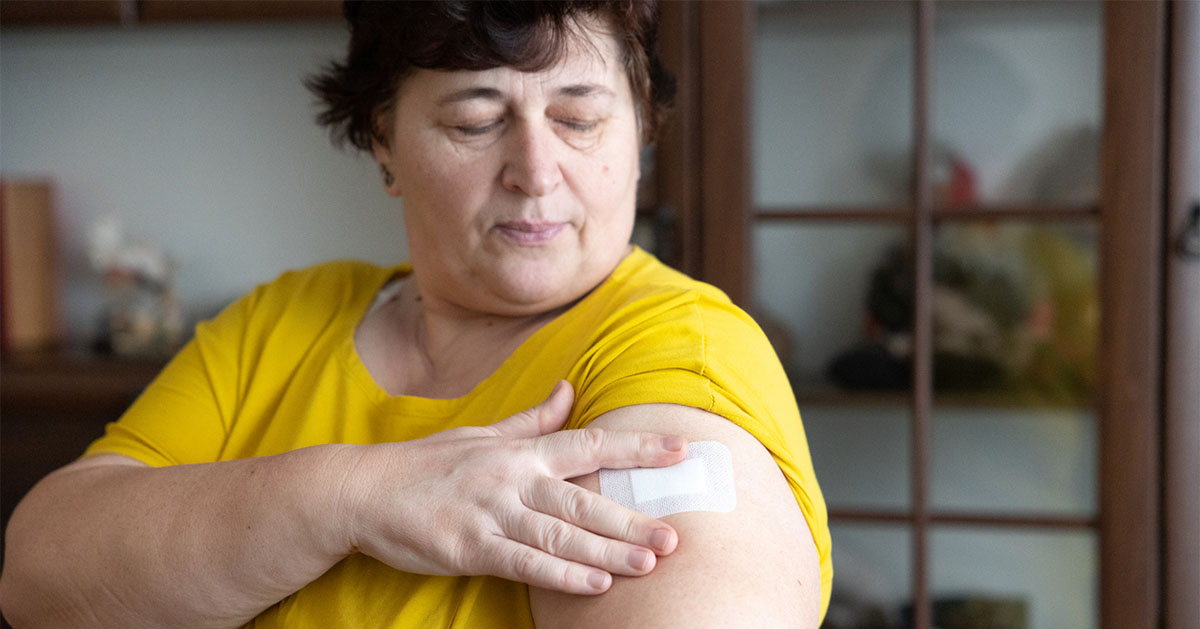Questions by:
Pam Brown, GP, Swansea
Q: Are people living with HIV (PLWH) screened routinely for type 2 diabetes? In PLWH, how common is type 2 diabetes?
PLWH are screened routinely in the UK for type 2 diabetes. The British HIV Association (BHIVA) advises that all PLWH on antiretroviral treatment aged ≥40 years are screened for diabetes with an annual HbA1c measurement (Angus et al, 2019).
Responding to “how common” type 2 diabetes is in PLWH is not straightforward. It is widely reported in the literature that diabetes is more common in PLWH, but how common is not clear. Cohort studies present wide-ranging prevalence figures of diabetes in PLWH (from 1.9% [Nguyen et al, 2019] to 26% [Ngatchou et al, 2013]), depending on the study location, ethnicity and age of participants, as well as the test used to diagnose diabetes. A recent study performed in the UK reported an alarming figure of approximately 1 in 3 PLWH having pre-diabetes or established type 2 diabetes (Duncan et al, 2018). Diabetes UK (2019) has reported approximately 3.9 million people living with diabetes in the UK (of whom 90% will have type 2 diabetes), equating to a prevalence of approximately 5.8%.
Q: What specific risk factors for type 2 diabetes are important in those living with HIV?
It remains unclear if PLWH are at an increased risk of developing diabetes due to antiretroviral therapy (ART), the virus itself, or a combination of the two. Something that is clear, given the increased life expectancy in the last two decades, is that traditional risk factors for diabetes (age, gender, lifestyle and genetics) need to be considered in the same way as in someone without HIV. HIV-associated conditions, such as hepatitis C and opiate usage, are also important risk factors for diabetes.
Certain ARTs need to be considered as “risk factors” for type 2 diabetes. In December 1995, protease inhibitors (PIs) became the first class of ART available to PLWH; protease inhibitor-associated hyperglycaemia was reported in The Lancet two years later (Dube et al, 1997). The mechanism underlying hyperglycaemia and PIs relates to increased insulin resistance and reduced insulin secretion. It is important to note that not all PIs have the same metabolic consequences, causing hyperglycaemia via different pathways. The newer PIs cause less hyperglycaemia (e.g. atazanavir and darunavir have less impact on insulin sensitivity). “HIV lipodystrophy” is certainly a risk factor for type 2 diabetes, largely being associated with the older ARTs, typically azidothymidine (AZT; zidovudine); new cases are, fortunately, rare. Diabetes associated with HIV lipodystrophy can be a challenge to manage owing to the associated insulin resistance. Another important class is the nucleoside reverse transcriptase inhibitors (NRTIs; stavudine, zidovudine and didanosine), for which an increased risk of diabetes is observed with a longer duration of use. More recently, the integrase inhibitors (e.g. dolutegravir) have been shown to increase weight gain and incidence of diabetes.
Q: What is the best test for diagnosing type 2 diabetes in those known to have HIV infection?
As mentioned previously, BHIVA recommends an annual HbA1c to screen for diabetes. However, the American Diabetes Association (ADA) and European AIDS Clinical Society (EACS) do not advocate performing HbA1c in PLWH and suggest a fasting blood glucose test instead. This conflicting guidance stems from a series of studies identifying HbA1c measurements to be falsely low in PLWH. If HbA1c is falsely low in PLWH, a normal result could falsely reassure us and lead to missing an important diagnosis and the opportunity to initiate management early. The optimum way to screen for diabetes in PLWH would be to perform a fasting glucose and HbA1c concurrently. Other markers of glycaemia, such as glycated albumin and fructosamine, have not been validated in PLWH.
Q: How does HIV infection interfere with assessment of glycaemic control?
As mentioned above, there are reports that HbA1c can be falsely low in PLWH. A theory for this is based around the idea of subclinical haemolysis. This is supported by studies observing high mean corpuscular volume (MCV) values and low haptoglobin levels in those with a falsely low HbA1c. Other associations with discordant HbA1c values include NRTI use (more specifically abacavir) and lower CD4 counts (Kim et al, 2009; Eckhardt et al, 2012; Kim et al, 2014; Slama et al, 2014; Coelho et al, 2018).
Q: Are people with type 2 diabetes and HIV at greater risk of cardiovascular disease than if they only had type 2 diabetes?
HIV infection has been established as an independent risk factor for cardiovascular disease (CVD). While the reports mainly relate to coronary artery disease, there is also an association with heart failure, peripheral artery disease and stroke.
The increased risk is attributed to the same factors as for people without HIV, such as smoking, obesity, physical inactivity and increased age. The HIV-specific factors associated with CVD include HIV viraemia and the pro-inflammatory state, as well as immune dysfunction (So-Armah and Freilberg, 2018). Research is concentrating on novel biomarkers, investigating the association and mechanism of increased plaque formation in PLWH. It is not clear if having type 2 diabetes and HIV leads to an additive effect on CVD.
Q: Which antiretroviral drugs interact with statins? Are some statins safe to use and are dose alterations needed?
The main concern with co-prescribing ART and statins is when ART is prescribed with the additional use of the pharmacokinetic boosters cobicistat and ritonavir, which leads to an increase in statin levels to a varying extent.
In general, atorvastatin is recommended and doses adjusted accordingly. Rosuvastatin has less predictable interactions and pravastatin is not as effective.
Simvastatin is not recommended and should not be co-administered with atazanavir, darunavir, lopinavir or elvitegravir.
For a detailed overview, please see the University of Liverpool’s HIV drug interaction website: www.hiv-druginteractions.org.
Q: What specific lifestyle measures should be targeted and is there evidence they make a difference in PLWH?
Diet, exercise and smoking cessation are shown to be highly effective in preventing type 2 diabetes in people without HIV. There are limited studies investigating lifestyle measures in PLWH, but no adverse effects have been reported. A recent study (Duncan et al, 2019) conducted in London looked at 28 people with impaired fasting glucose and HIV. It found beneficial effects of lifestyle interventions in reducing the risk of developing type 2 diabetes, although the authors commented on barriers, such as stigma and body image, to achieving weight loss in PLWH.
Q: Which glucose-lowering drugs are preferred choices in PLWH?
Managing diabetes in PLWH should follow the same guidance as for people without HIV. Consideration is required with respect to ART interactions.
In most cases when an ART is prescribed with a glucose-lowering drug, it is the glucose-lowering drug level that is increased or decreased, rather than the ART (except for the glucagon-like peptide-1 receptor agonists [GLP-1 RAs]). Specific potentially problematic examples include:
- Metformin and dolutegravir leading to increased exposure of metformin (quoted as high as 79%) and so the potential for worsening side effects. If these medications are to be prescribed together, metformin should be reduced to a maximum dose of 500 mg twice daily.
- GLP-1 RAs (dulaglutide, exenatide and liraglutide) and atazanavir or rilpivirine, owing to the potential for GLP-1 RAs to inhibit gastric secretion. If co-prescribing, the advice is to take the ART 2–4 hours before the GLP-1 RA.
- Sodium–glucose cotransporter 2 (SGLT2) inhibitors canagliflozin and empagliflozin and tenofovir disoproxil fumarate – caution is advised here due to potential additive bone toxicities. Dapagliflozin does not appear to have interactions with ARTs.
For a detailed overview, please see the “Anti-diabetic treatment selector” on the University of Liverpool’s HIV drug interaction website www.hiv-druginteractions.org.
Q: Hepatic steatosis is common in PLWH. What is the best way to manage this and should it influence diabetes drug treatment choice?
Non-alcoholic fatty liver disease (NAFLD) is becoming a leading cause of liver disease in PLWH. NAFLD is a general term encompassing a range of liver pathology from steatosis to non-alcoholic steatohepatitis (NASH). It is important to recognise NAFLD and initiate management to prevent progression to liver cirrhosis. Risk factors for NAFLD include viral infections, mitochondrial dysfunction and insulin resistance, all of which are features of PLWH. Causes of NAFLD in HIV are linked to HIV-mediated toxicity, drug toxicity, metabolic syndrome and gut translocation of bacterial products (van Welzen et al, 2019).
Weight loss is the mainstay of treatment in NAFLD. There are reports that sustained weight loss of >10% can improve the histopathological features of NASH. Diet modification and increasing exercise should be encouraged. Improvements in NASH have been observed following bariatric surgery, but NAFLD is not part of the referral criteria for bariatric surgery, so patients would need to meet the usual referral criteria.
There is no clear evidence regarding the best diabetes drug treatment choice in NAFLD. The current options available include insulin-sensitising agents like pioglitazone (taking into consideration the expected weight gain as a side effect); metformin; and, more recently, GLP-1 RAs, which are showing promising results.
With respect to ART use and NAFLD, medication should be reviewed to check that the ART does not have a significant effect on the metabolic or lipid profile.





Increased risk of new-onset heart failure in over-65s suggests caution is required before prescribing pregabalin for painful diabetic neuropathy.
14 Aug 2025